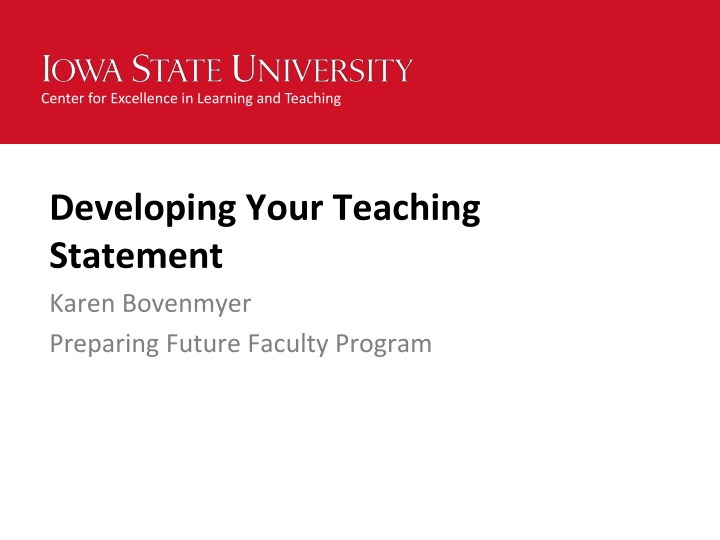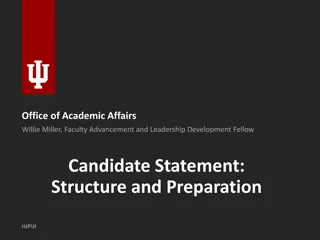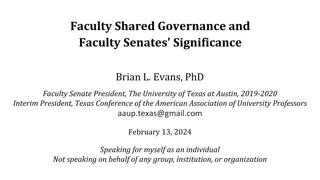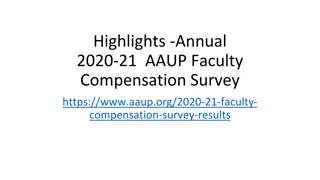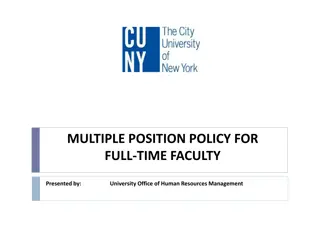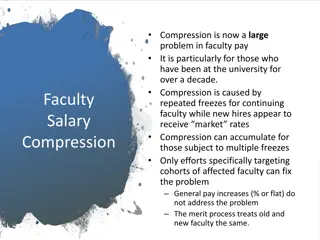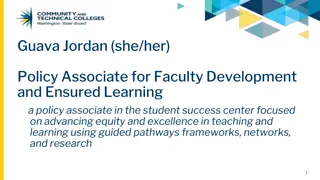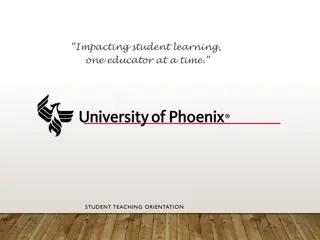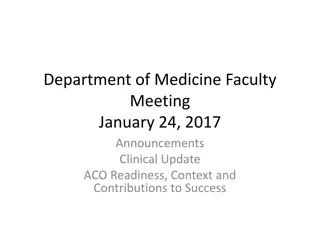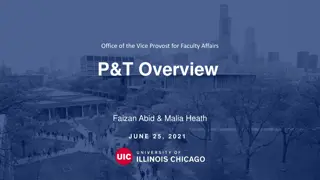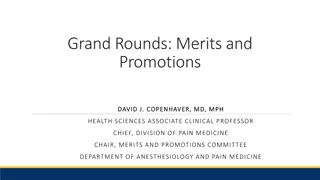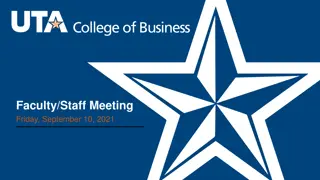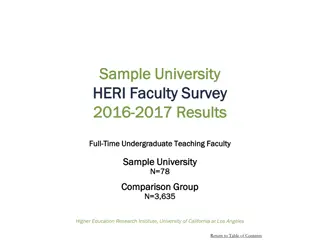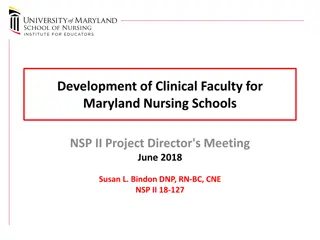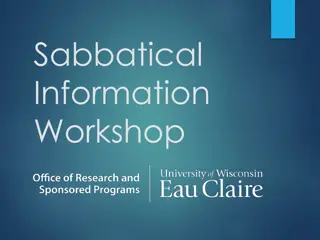Developing Your Teaching Statement for Future Faculty Program
Participate in a video session hosted by the Center for Excellence in Learning and Teaching to learn about creating teaching statements. The session guides you through prompts to stimulate your thinking and help you draft your statement step by step, covering topics like best practices for writing teaching statements and what they are used for. Utilize recommended reading materials and reflection exercises during the session to craft a strong teaching statement.
Download Presentation

Please find below an Image/Link to download the presentation.
The content on the website is provided AS IS for your information and personal use only. It may not be sold, licensed, or shared on other websites without obtaining consent from the author.If you encounter any issues during the download, it is possible that the publisher has removed the file from their server.
You are allowed to download the files provided on this website for personal or commercial use, subject to the condition that they are used lawfully. All files are the property of their respective owners.
The content on the website is provided AS IS for your information and personal use only. It may not be sold, licensed, or shared on other websites without obtaining consent from the author.
E N D
Presentation Transcript
Center for Excellence in Learning and Teaching Developing Your Teaching Statement Karen Bovenmyer Preparing Future Faculty Program
2 of 20 Participating in this video will: Introduce you to teaching statements Guide you through a series of prompts to stimulate your thinking Help you start drafting your statement, section by section Center for Excellence in Learning and Teaching
3 of 20 Outline for participation: 1. Read and Reflect 1: Read (~2 minutes) 2. Read and Reflect 2: Reflect (~5 minutes) Type your answers to 2 questions 3. Freewriting 1: Reflect (~10 minutes) Type your answers to 3 questions 4. Freewriting 2: Reflect (~20 minutes) Type your answers to 4 questions to form the basis of your rough draft Schedule ~45 minutes Center for Excellence in Learning and Teaching
4 of 20 Instructions: 1. Create a new document for writing during this video 2. When prompted, click pause on the video to: 1. Read and reflect (~7 minutes) 2. Freewrite, answering the question on the slide, for the recommended amount of time: 3 questions, ~3 minutes each (~10 minutes) 4 questions, ~5 minutes each (~20 minutes) Center for Excellence in Learning and Teaching
5 of 20 Read and Reflect 1: Read 1. Open Washington University at Saint Louis (WUStL) s Teaching Philosophy Statement website at https://ctl.wustl.edu/resources/teaching- philosophy/ 2. Read the What do Successful Statements Do? paragraph (~2 minutes). 3. Optional: Read the complete article keeping your specific purpose in mind (promotion and tenure, award applications, job apps, etc.) ~10 minutes. Center for Excellence in Learning and Teaching
6 of 20 Read and Reflect 2: Reflect 1. Create a blank document for notes and freewriting 2. When prompted, pause the video for ~1 minute and freewrite your answers to the questions on each slide. Center for Excellence in Learning and Teaching
7 of 20 What are teaching statements used for? Center for Excellence in Learning and Teaching
8 of 20 What are best practices for writing teaching statements? Center for Excellence in Learning and Teaching
9 of 20 Freewriting 1: High Level Brainstorm Pause the video and set a three-minute timer for each question: Write as fast as you can! No pauses. No editing. Even if it feels silly or useless -- Write! Center for Excellence in Learning and Teaching
10 of 20 1. Remember the best teacher you ve ever had. What did they do to help you learn? Center for Excellence in Learning and Teaching
11 of 20 2. What would be the best compliment anyone could give you on your teaching? Center for Excellence in Learning and Teaching
12 of 20 3. What would you hope students might say at your retirement? Center for Excellence in Learning and Teaching
13 of 20 Freewriting 2: Instructions 1. Insert a page break into your document, or create a new heading titled Rough Draft 2. Create subheadings for the next four questions: 1. Why do you teach? 2. What do you teach? 3. How do you teach? 4. How do you measure your effectiveness? Answering these questions in order (why, what, how, effectiveness) can form the basic sections Center for Excellence in Learning and Teaching of a four-paragraph statement.
14 of 20 Freewriting 2: Why, What, How, Effectiveness Pause the video and set a five-minute timer for each question : Fast as you can! No pauses. No editing. Even if it feels silly or useless -- Write! Center for Excellence in Learning and Teaching
15 of 20 1. Why do you teach? Why are you drawn to teaching? Rewards and challenges? How has your life thus far influenced your teaching and your ideas about teaching? Why do you find teaching valuable and worthwhile? What do you think is your best way of teaching? Center for Excellence in Learning and Teaching
16 of 20 2. What do you teach? What are the specific subjects and courses you are prepared to teach? What should students gain from taking your courses? What do you know, understand, or intuit about student learning, particularly in your field? What are your objectives? Do your objectives fit the realities of the job? Center for Excellence in Learning and Teaching
17 of 20 3. How do you teach? Describe your teaching experience; use some details which show skill and creativity. What teaching strategies do you use? Lectures? Discussions? Group work? A combination? What kinds of assignments and assessments do you use? When do you use technology? Center for Excellence in Learning and Teaching
18 of 20 4. How do you measure your effectiveness? How do you know if you met your objectives? How can you tell if your students are learning? How do you use student evaluations to better engage students/increase participation? How have you used feedback from an observation (faculty or peer) of your teaching to improve? Center for Excellence in Learning and Teaching
Next steps: 19 of 20 1. Cut and paste your answers to Freewriting 2 into a new document to form your rough draft 2. Review: 1. Your answers to Read and Review (slides 7-8) Optional: Read WUStL article 2. Your answers to Freewriting 1: 3 questions 3. Edit your new document, revising it, reshaping it using ideas from your earlier writing (step 2) 4. When your first draft is complete, reflect and revise over several days 5. Share with a mentor and ask for advice 6. Revise and find people with fresh eyes to review subsequent drafts Center for Excellence in Learning and Teaching
20 of 20 Karen Bovenmyer Preparing Future Faculty pff@iastate.edu Center for Excellence in Learning and Teaching
